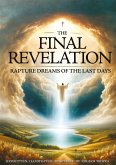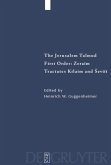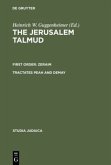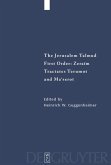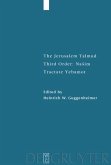This study examines by a meticulous analysis of abundant rabbinic citations the pluralism of the Halakhah in the pre-70 period which stands in contrast to the fixed Halakhah of later periods. The Temple's destruction provoked, for political motives, the initiation of this significant shift, which protracted itself, in developmental stages, for a longer period. The transition from the Tannaitic to the Amoraic era was a consequential turning point on the extended path from flexibility to rigidity in Jewish law.
Die Studie untersucht anhand ausgedehnter rabbinischer Zitate den Pluralismus der Halacha in der Zeit vor der Zerstörung des Tempels 70 n. Chr., welcher zu der festgefügten Tradition der Halacha in späterer Zeit in Kontrast steht. Die Tempelzerstörung war- aus politischen Motiven - der Anlaß für diese auffällige Veränderung, die sich in verschiedenen Entwicklungsstufen über einen längeren Zeitraum erstreckte. Der Übergang von der Tannaitischen zur Amoräischen Periode bildete einen folgenreichen Wendepunkt auf dem langen Weg des jüdischen Gesetzes von Flexibilität zur Strenge.
Die Studie untersucht anhand ausgedehnter rabbinischer Zitate den Pluralismus der Halacha in der Zeit vor der Zerstörung des Tempels 70 n. Chr., welcher zu der festgefügten Tradition der Halacha in späterer Zeit in Kontrast steht. Die Tempelzerstörung war- aus politischen Motiven - der Anlaß für diese auffällige Veränderung, die sich in verschiedenen Entwicklungsstufen über einen längeren Zeitraum erstreckte. Der Übergang von der Tannaitischen zur Amoräischen Periode bildete einen folgenreichen Wendepunkt auf dem langen Weg des jüdischen Gesetzes von Flexibilität zur Strenge.


